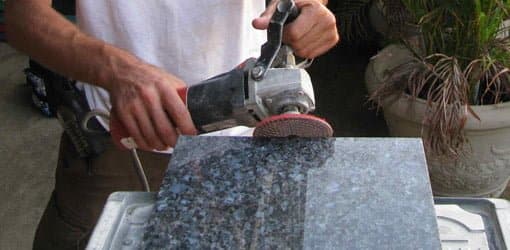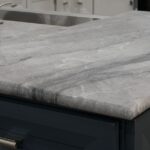Making your old granite countertop look brand new again is something very appealing, especially for remodeling purposes. We all know how any type of natural stone can lose its color and brightness over time – and there are always viable solutions for this. One of them, of course, involves sealing (since granite is a porous material), but even the best sealer is not immune to wearing. Eventually, most homeowners will decide that some polishing is needed, but many don’t know where to start. If that’s your case, don’t worry – because we’ll teach you how to polish granite countertops the right way.
In fact, there are several ways you can go about this, so each one is going to be explained thoroughly. Keep reading the article to find out – or click here to read our definitive guide on granite countertops, with everything you need to know about this product.
Can I polish granite countertops myself?
First and foremost, it’s best to clarify a few things. This is a recurring question between clients and professionals, and the answer depends a lot on whom you ask.
Yes, you can polish granite countertops by yourself, but experts can always do it better. Especially if you’re a beginner, any kind of installation requires meticulous handwork, and even small errors can compromise the countertop’s appearance.
That said, we’ve listed below different polishing techniques with different levels of difficulty. Some of these resources are commonly found in your nearest construction store, some of them are not. Depending on the situation, choosing how to polish granite countertops is up to you.

How to polish granite countertops
Granite can be polished with either wet or dry material – and both techniques are great. Among the pros and cons of each, we have:
- polishing paste is more expensive than polishing powder;
- powder can be used in a dry or wet state;
- wet polishing with power tools creates spray, so wear water-resistant clothes and protect nearby furniture with a plastic sheet;
- dry polishing with power tools creates sparks and flying pieces, so wear eye-protection and rubber gloves.
Before undertaking any of the following alternatives, clean up your counter and set aside all appliances in the way. Once you’re all done, it’s time to polish.
Baking soda
This is one of the homemade solutions we can apply to granite. It’s versatile and incredibly effective. For this, make a mixture of three parts baking soda with one part warm water – combining them until smooth. Then, apply a thin layer of this paste to your granite surface and buff it with a clean cloth. With a damp cloth, you may wipe away any residue afterwards.

Cooking oil
Yes, cooking oil may sound strange – in excess, it can even stain your surface – but small amounts of oil work against opaqueness just fine. Either vegetable or olive oil is effective – just drop small doses to a soft cloth and wipe it gently in circular motions. Not only does it provide a nice brightness, but it also helps repel water.
Retail granite polish
There are many cleaning products for granite stones in home improvement stores. Just like baking soda and cooking oil, these solutions need to be carefully wiped over the stone to achieve the best results. Just make sure to get the right one – always read the label and follow the manufacturer’s instructions.
Granite polishing powder
This offers a quick way to put a fresh gleam on granite while removing stains and scratches – but you’ll need a power tool for the job. Electrical polishers can be rented. Anyways, if you choose to use it dry, buy a buff polishing pad; if you choose to use it wet, the best option is going for a muslin wheel. For aesthetic reasons, we also recommend you get the compound that matches the primary color of your stone.
Granite polishing cream
Most creams contain light abrasives suited to manufacture premium countertops, which makes them a wonderful deal. With a power tool, even the oldest granite stones can become glossy again, leading to remarkable results.
Sealing and cleaning routine
Like we mentioned in the introduction, polishing is not the only thing you can do to extend the lifetime of your product. As you can read here, applying a good sealer to the granite surface annually is the best way to preserve its shiny finish, so keep that in mind.
Also, adopting a cleaning routine is just as important. After all, any spills and leftover residue can cause stains, scratches, etching and even cracks on your countertop in the long run. It’s ideal to know the solutions available to avoid this problem in the first place.
That’s why, once again, we recommend professional assistance for any major inconvenience that a granite countertop might present. A dexterous team can take care of any problem without fuss and even give you some new ideas to improve on the look of your stone.
Contact Eagle Stones to polish your granite for you!
If you live nearby Sarasota, FL, or any of its surrounding counties, why not give us a call to help you out? Our team of professionals provides our clients with the best services in town – including supply, installation and maintenance. Check out our online catalog to see more!
You may also like: How Thick Granite Countertops Should Be?
Fill out this form to receive a free estimate from Eagle Stones today.



